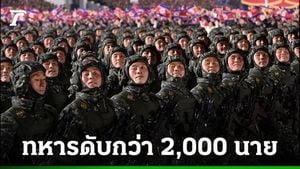On September 2, 2025, the U.S. State Department will roll out sweeping changes to its visa policy, a move that will reverberate through embassies and consulates across the globe. For travelers, students, and skilled workers from 57 countries—including Afghanistan, Cuba, Egypt, Iran, Venezuela, and Zimbabwe—the days of streamlined renewals and "drop-box" conveniences are coming to an abrupt end. The new rules, which have been described by Skift as a "reset likely to frustrate students, workers, and travel planners," are set to bring longer waits, higher costs, and much tighter screening.
At the heart of the change is the elimination of the "drop-box" system for non-immigrant visa applicants from the affected countries. Previously, many could renew their visas or submit applications without the hassle of an in-person interview. Now, all bets are off: these applicants must appear in person at a U.S. embassy or consulate, regardless of whether they are seeking a B-1/B-2 tourist or business visa, an F-1 student visa, an H-1B skilled worker visa, or an L-1 intra-company transfer visa. The change, as reported by pulselive.co.ke, is expected to stretch consulate staff and appointment slots, leading to significantly longer wait times.
The list of 57 countries affected isn't arbitrary. It includes nations that have historically faced tighter U.S. immigration scrutiny, such as Afghanistan, Cuba, Iran, Myanmar, Venezuela, and Zimbabwe. But it also sweeps in others like Bhutan, Egypt, and Haiti. The policy shift means that even previously exempt groups—children under 14 and adults over 79—will now see their interview exemptions reduced or removed. The days when youth or advanced age could spare someone a trip to the embassy are, for many, over.
For those navigating the U.S. visa process, the logistical headaches are about to multiply. The State Department has acknowledged that "the new rules will likely lead to longer visa appointment wait times." With more people required to show up in person, applicants are being urged to check the State Department’s website for the latest processing times and to brace themselves for delays. The rules around rescheduling appointments have also tightened: applicants can now reschedule for free only once. If they need to change their appointment again, they'll have to pay the visa application fee all over again. It's a small detail, but for families and busy professionals, it could add up quickly.
But the changes don't stop there. Beginning at the end of September 2025, travelers entering the U.S. via land or from Visa Waiver Program nations will see a steep hike in the Electronic System for Travel Authorization (ESTA) fee. The fee for land entry will jump from $6 to $30, while the ESTA fee for travelers from Visa Waiver countries will nearly double from $21 to $40—a price that will remain in effect through 2034. For many, this is more than just an inconvenience; it's a financial blow at a time when global travel is already facing headwinds.
According to pulselive.co.ke, these updates are part of a broader effort to tighten U.S. immigration policies. A new "visa integrity fee"—refundable, but still a hurdle—will be introduced for many non-immigrant visa applicants to help fund screening and compliance efforts. Some B-1/B-2 applicants from designated countries will also be required to post a bond ranging from $5,000 to $15,000, refundable only upon compliance with visa conditions. Critics warn that these measures will further increase the cost and complexity of visiting the U.S.
Applicants will also face stricter vetting. The State Department is demanding more stringent document checks and requiring applicants to provide social media details. These new requirements have already led to delays and additional document requests, making an already daunting process even more challenging. As the pulselive.co.ke report notes, "Applicants will face more stringent document checks and be required to provide social media details. These measures have already led to delays and increased requests for additional documentation."
The changes are particularly significant for students and journalists. The U.S. Department of Homeland Security is considering replacing open-ended visa durations for F-1 students, J-1 exchange visitors, and I-Visa media applicants with fixed admission periods. If implemented, this would require these individuals to submit separate applications for extensions, adding yet another layer of bureaucracy. For those on H-1B visas, a proposed rule could prioritize visa allocations based on salary level rather than the current lottery system—a move that may especially impact Indian professionals seeking employment in the U.S.
Even the process of collecting a passport has been made more cumbersome. Since August, U.S. embassies have stopped allowing third-party passport collection. Applicants must now collect their passports in person, or, in the case of minors, a parent or guardian with proper consent can do so. It's one more step in a gauntlet that seems to get tougher by the month.
Tourism, too, is feeling the pinch. According to pulselive.co.ke, "Tourism to the U.S. has shown a decline for five of the past six months, and the new visa restrictions, higher fees, and other challenges could exacerbate the trend." Travel industry insiders warn that the combination of higher costs, longer waits, and more stringent requirements could deter both tourists and business travelers, further slowing the sector's recovery from the pandemic-era slump.
For those hoping to study, work, or simply visit the United States, the message is clear: plan ahead, expect delays, and prepare to jump through more hoops than ever before. The State Department, for its part, insists that these measures are necessary to "tighten U.S. immigration policies" and ensure the integrity of the visa process. But for the millions affected, the new rules may feel less like a security upgrade and more like a formidable new barrier.
As the world adapts to these changes, one thing is certain: the path to America is about to get a lot more complicated.




